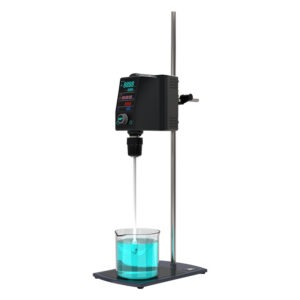
As the field of analytical chemistry continues to evolve, the demand for more accurate, efficient, and reliable instruments has driven remarkable innovations. From spectroscopy and chromatography to mass spectrometry, modern analytical chemistry instruments have undergone significant advancements that not only enhance research productivity but also open new possibilities in various industrial applications. In this article, we explore the cutting-edge technologies shaping the future of chemical analysis and how these innovations are revolutionizing both the research and industrial landscapes.
1. Advancements in Spectroscopy
Spectroscopy is one of the fundamental techniques used in chemical analysis, allowing scientists to study the interaction between matter and electromagnetic radiation. Recent advancements in this field have focused on improving sensitivity, resolution, and speed, while also expanding the range of detectable wavelengths.
Key innovations include:
- Fourier Transform Infrared (FTIR) Spectroscopy: This technique has seen significant improvements in both hardware and software, allowing for more precise and rapid identification of organic compounds. The integration of AI algorithms has enabled automatic data interpretation, reducing human error and increasing throughput.
- Raman Spectroscopy: Enhanced signal detection through surface-enhanced Raman spectroscopy (SERS) has expanded its applications to trace-level detection, particularly in pharmaceuticals and environmental monitoring. The development of handheld Raman spectrometers has made this technology more accessible in fieldwork, allowing real-time analysis.
2. Breakthroughs in Chromatography
Chromatography remains one of the most widely used techniques in chemical analysis for separating and identifying components in a mixture. Recent developments in chromatographic techniques focus on achieving faster separation with greater precision and efficiency.
Notable advancements:
- Ultra-High Performance Liquid Chromatography (UHPLC): UHPLC systems now offer faster analysis times with higher resolution compared to traditional HPLC. The introduction of smaller particle sizes in the stationary phase allows for increased efficiency and reduced solvent consumption, which is both cost-effective and environmentally friendly.
- Supercritical Fluid Chromatography (SFC): This emerging technology offers a greener alternative to traditional chromatography, utilizing supercritical CO₂ as a solvent. It provides rapid separation times and excellent selectivity, making it ideal for analyzing complex mixtures, especially in pharmaceutical research.
3. Mass Spectrometry: Greater Precision and Miniaturization
Mass spectrometry (MS) is an essential tool in analytical chemistry for identifying and quantifying chemical compounds based on their mass-to-charge ratio. The latest advances in MS technology focus on increasing sensitivity, resolution, and portability.
Key developments include:
- High-Resolution Mass Spectrometry (HRMS): With improvements in resolution, HRMS can now detect and differentiate compounds with almost identical mass-to-charge ratios. This is particularly beneficial for proteomics and metabolomics, where distinguishing between complex molecules is crucial.
- Portable Mass Spectrometers: The miniaturization of mass spectrometers has led to the development of portable devices that can be used for real-time analysis in the field. These compact instruments are especially valuable for environmental monitoring, forensic analysis, and even space exploration, where on-site chemical identification is essential.
4. Automation and Digitalization in Analytical Instruments
One of the most transformative trends in analytical chemistry is the integration of automation and digital technologies, including artificial intelligence (AI) and machine learning (ML). These technologies have revolutionized the way instruments operate, offering real-time data analysis, error reduction, and enhanced productivity.
Examples of automation include:
- AI-Powered Data Interpretation: Instruments equipped with AI can automatically interpret complex data sets, reducing the need for manual data processing. This not only saves time but also improves accuracy, particularly in high-throughput environments such as pharmaceutical research and clinical diagnostics.
- Automated Sample Preparation: Robots and automated systems for sample preparation have significantly reduced human intervention, which minimizes contamination risks and increases efficiency. Automation is particularly beneficial in laboratories with a high volume of routine analyses.
5. Green Chemistry: Toward Sustainable Instruments
As environmental concerns rise, the push toward green chemistry has influenced the design and development of chemical instruments. Companies are now focusing on creating more sustainable instruments that minimize waste, reduce energy consumption, and use environmentally benign materials.
Key initiatives include:
- Energy-Efficient Equipment: New designs in analytical instruments are prioritizing energy efficiency. For example, modern spectrometers and chromatographs are now equipped with low-power consumption modes that reduce energy usage during idle times.
- Reduction of Hazardous Reagents: The move towards solvent-free or low-toxicity solvents in chromatographic techniques, such as Supercritical Fluid Chromatography (SFC), is a key development in reducing the environmental impact of chemical analysis.
6. Applications of Advanced Analytical Instruments in Industry
These cutting-edge advancements are not limited to academic research but have broad implications across various industries. From pharmaceuticals to environmental science, the enhanced capabilities of modern analytical instruments are helping to accelerate innovation and ensure compliance with increasingly stringent regulatory standards.
Key industry applications:
- Pharmaceuticals: Faster and more accurate drug development is now possible with advanced chromatography and mass spectrometry technologies, which are crucial for the identification and quantification of drug compounds and impurities.
- Environmental Monitoring: Portable and highly sensitive instruments such as handheld Raman spectrometers and miniaturized mass spectrometers are now widely used for monitoring pollutants and detecting contaminants in real-time, helping industries meet environmental standards.
- Food and Beverage Industry: The demand for food safety and quality control has led to the increased use of advanced spectroscopy and chromatography systems to detect contaminants and ensure product consistency.
Conclusion
The field of analytical chemistry is experiencing rapid growth, with cutting-edge advancements in instruments that are transforming the way chemical analysis is conducted. From AI-driven automation to sustainable designs, these innovations are enabling scientists and industry professionals to conduct faster, more accurate, and more environmentally responsible analyses. As these technologies continue to evolve, their impact on research and industry will only become more profound, driving further discoveries and advancements in chemical science.

